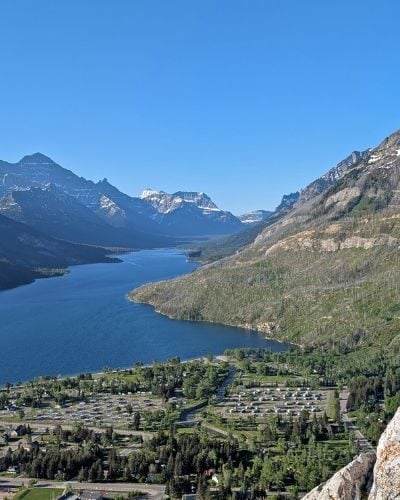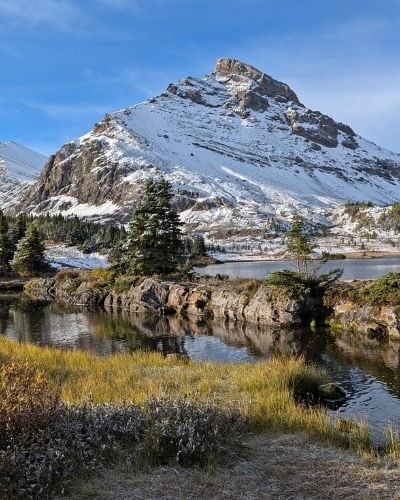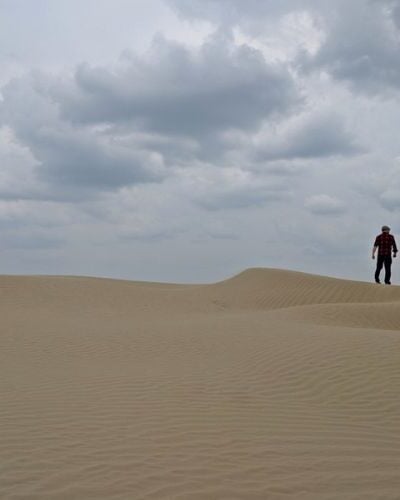The Berg Lake Trail is an iconic multi-day hiking adventure in British Columbia, Canada. The 22km long route through the Canadian Rockies has it all – massive glaciers, snow-capped mountain peaks, steep forested valleys, huge waterfalls, and turquoise coloured lakes.
But what to bring on such an unforgettable backpacking trip? In this post, I’m going to help you create your perfect Berg Lake Trail packing list.
I will cover backpacking essentials as well as Berg Lake Trail specific items and optional luxury items, with tips gained from our own recent Berg Lake Trail hike as well as 50+ backcountry adventures.
For general advice relating to the Berg Lake Trail, head to our dedicated hiking guide.
This post includes some affiliate links. If you make a purchase via one of these links, we may receive a small percentage of the total sale at no extra cost to you.
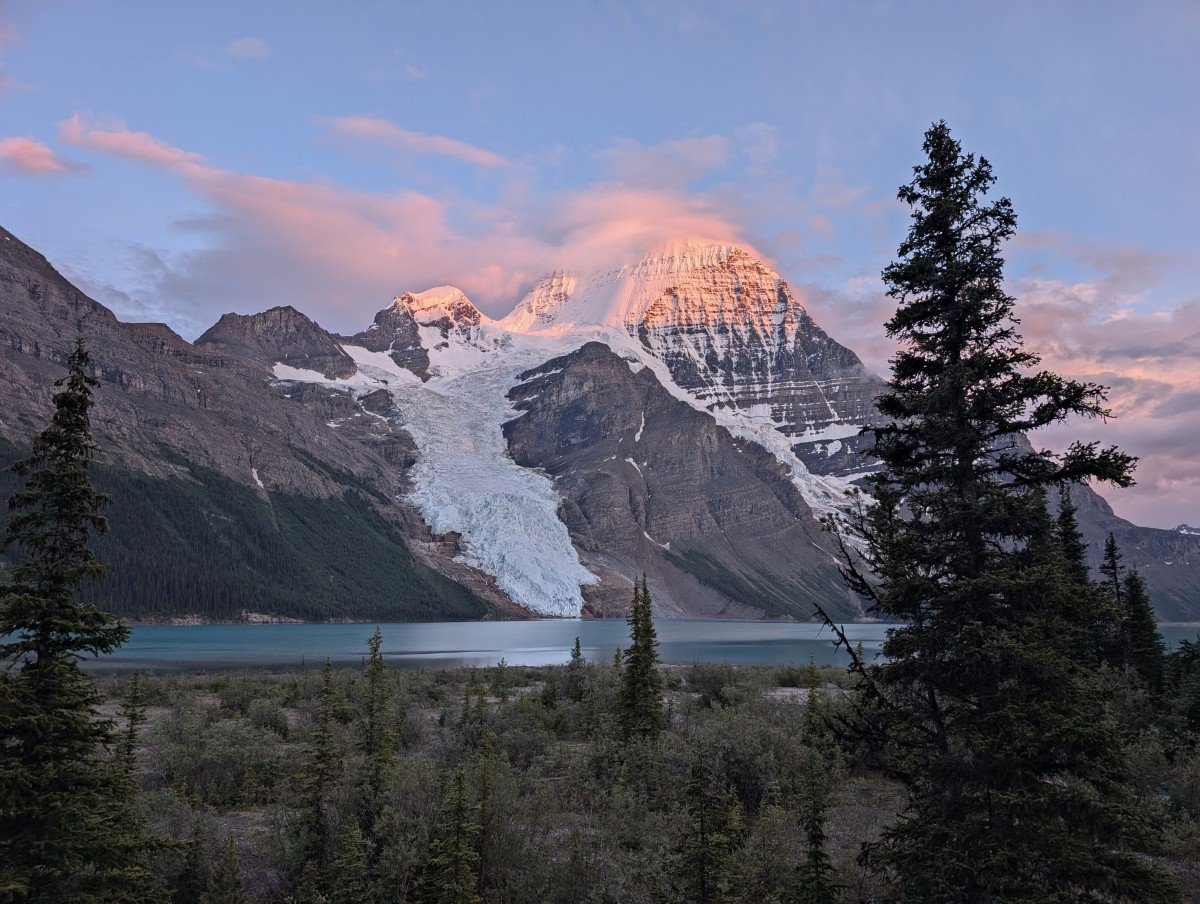
Putting together the perfect Berg Lake Trail packing list
Every hiker is different, so there’s no single Berg Lake Trail packing list that will work for everyone. This post is all about pointing you in the right direction to create your own personalised list of items.
New to multi-day hiking? The Berg Lake Trail is a perfect choice for your first backpacking adventure – it’s not too long (22km one-way), the trail is very well maintained, the campgrounds are well equipped, the elevation gain relatively approachable and the reward to effort ratio is high.
2026 reservations go live on 2nd December 2025 at 7am. More information and tips in our Berg Lake Trail guide.
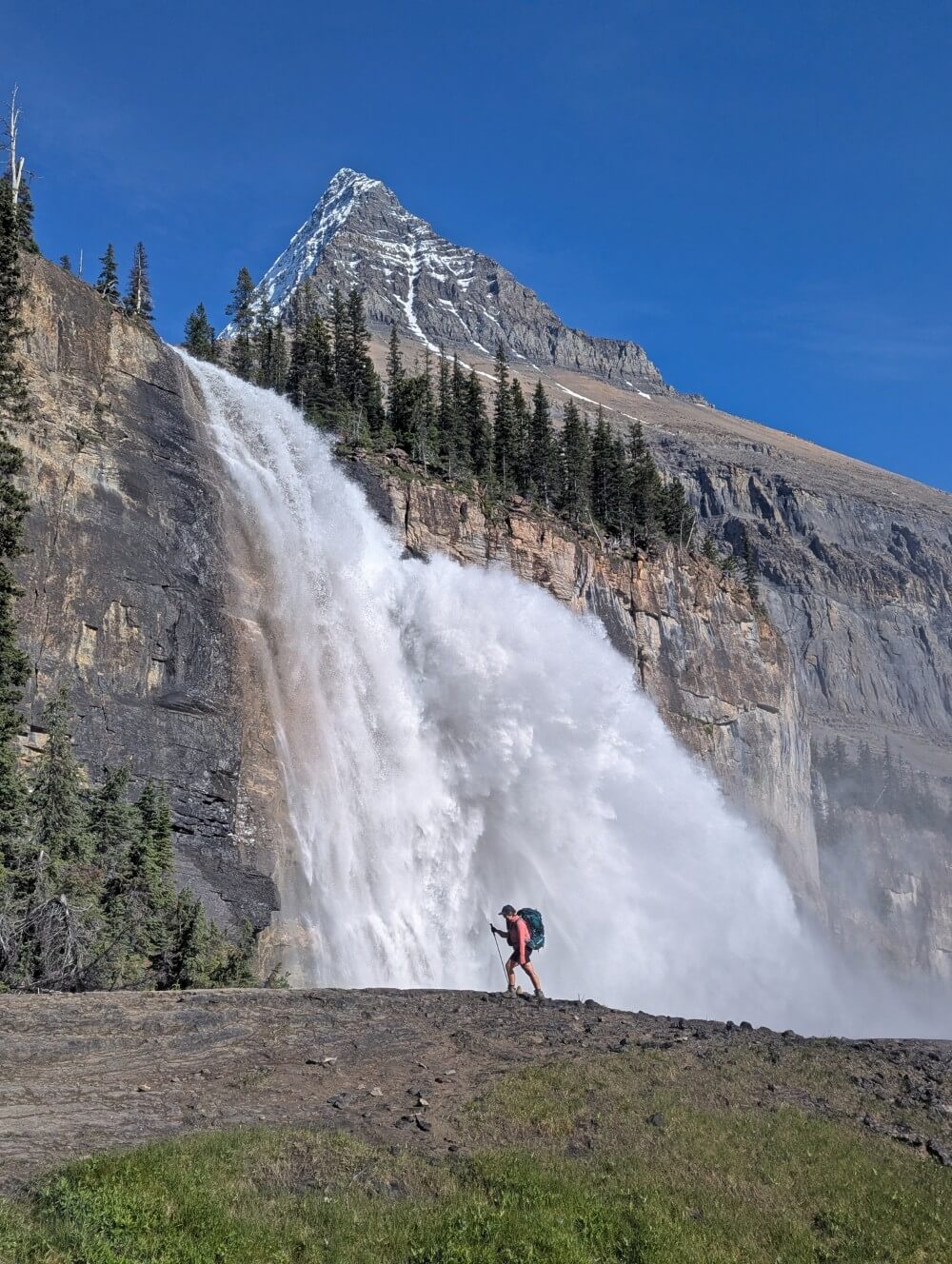
Backpacking is all about balance. A lighter pack makes hiking physically easier. But you also need to be completely self-sufficient. If you sign up our monthly newsletter, you’ll receive a free printable packing list.
It can take a few backpacking trips to refine the best set-up (food, gear, clothing, footwear etc) for you. Over time, you might swap out certain items to lighten your pack or make your hike more comfortable.
Keep in mind that your loaded backpack should not weigh more than 20% of your body weight. So, for example, a hiker weighing 150lb (68kg) should aim for a backpack weight of around 30lb (13.6kg).
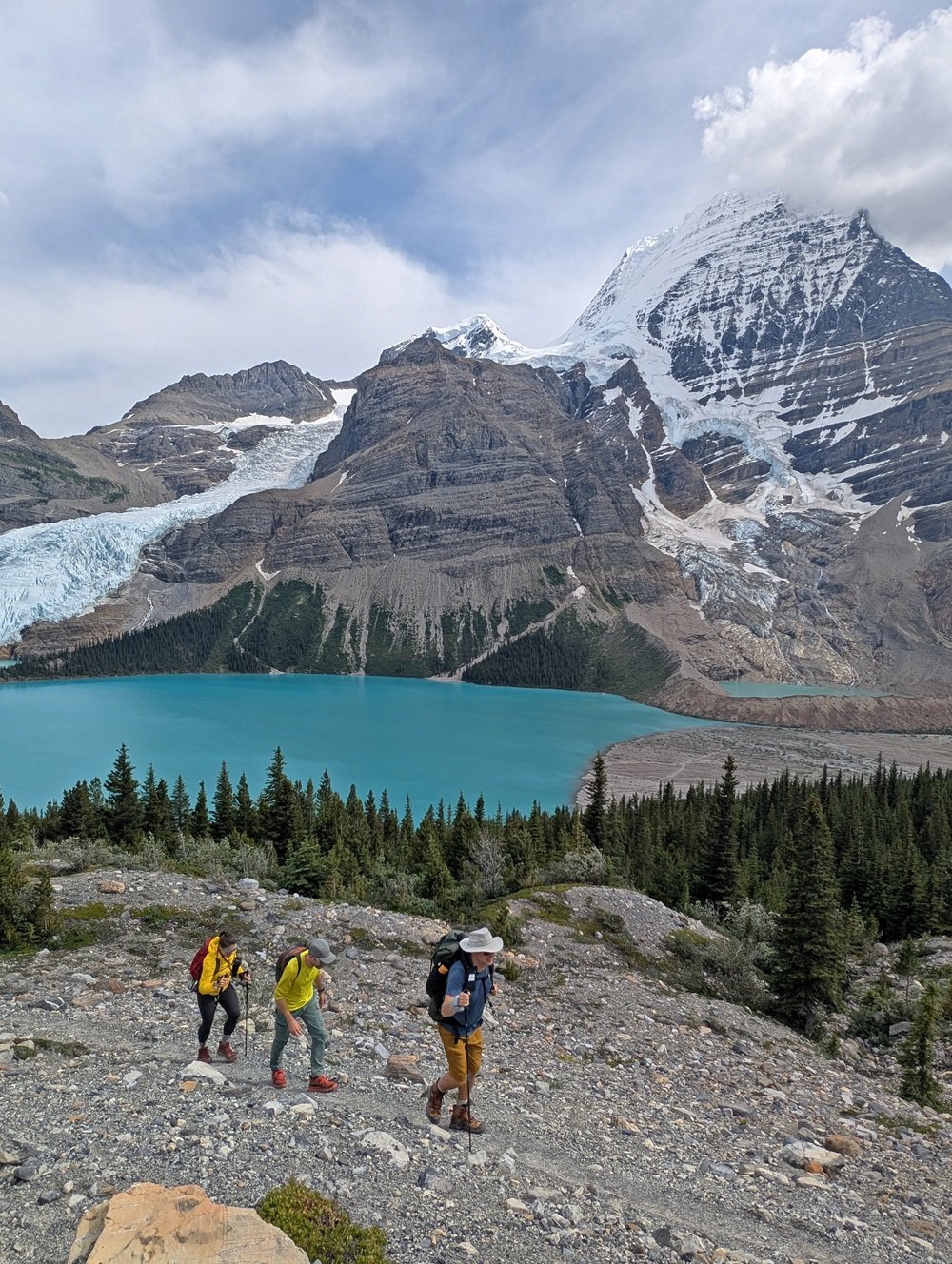
Backpacking essentials
Let’s start with the essentials.
If you’re already an experienced multi-day hiker, consider skipping to the section with specific Berg Lake Trail items.
- Backpack
- Tent
- Sleeping bag
- Sleeping mat/pad
- Stove and fuel
- Cooking pot and utensils
- Food
- Food storage
- Water treatment system
- Water storage
- Clothing (at least two outfits)
- Appropriate footwear
- First Aid kit
- Light source
- Map
- Signaling device
- Fire starters
- Repair kit and tools
- Sun protection
- Toiletries
- Medication
The Big Four – backpack, tent, sleeping bag, sleeping mat
Food aside, the Big Four will be the heaviest items in your backpack.
Backpack
Ideally, your backpack should be big enough to fit all of your gear inside of it. Items stashed on the outside of the pack can get snagged, damaged or even drop off. Swaying items can also throw off your balance.
A well-fitted backpack should be comfortable, distribute the load of your gear evenly and transfer the weight to your biggest and strongest muscles (those in your hips and legs).
The most common backpack size for a 3-5 day Berg Lake hike is 50 to 70 litres. Hikers with ultralight gear (or those on shorter itineraries) may use smaller backpacks, especially for shorter trips. We used an Osprey Aura AG 65 and Osprey Aether 65.
More information about choosing a backpack is in our Backpacking 101 guide.
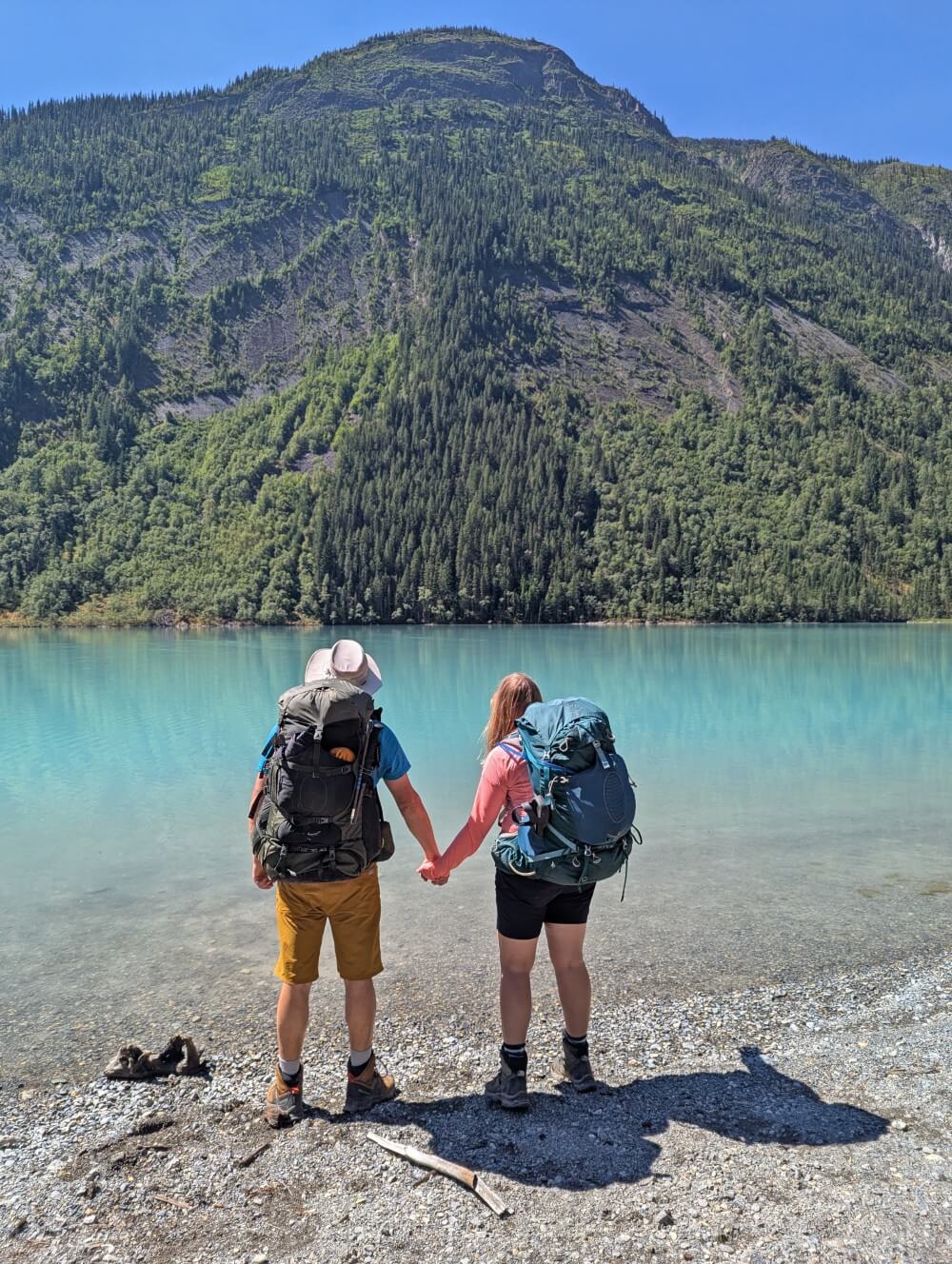
Tent
Hikers must camp on designated pads on the Berg Lake Trail. The campsites are mostly framed dirt, with a few elevated wooden platforms. For that reason, a freestanding tent is not essential.
Berg Lake Trail tent pad sizing varies; most around 10 feet by 10 feet (3m x 3m), some are smaller. Two tents are allowed per pad but technically both tents must fit entirely on the pad itself.
We used a Big Agnes Copper Spur 3 on the Berg Lake Trail. We shared a tent pad at Emperor Falls with friends who were using a 2 person North Face tent – we couldn’t fully expand our tent vestibules but it worked well enough for one (dry) night.
Most three-season backpacking tents weigh between 2lb (1.1kg) to 7lbs (3.17kg). A good weight to aim for is 2lb per person.
More information about choosing a backpacking tent is in our Backpacking 101 guide.
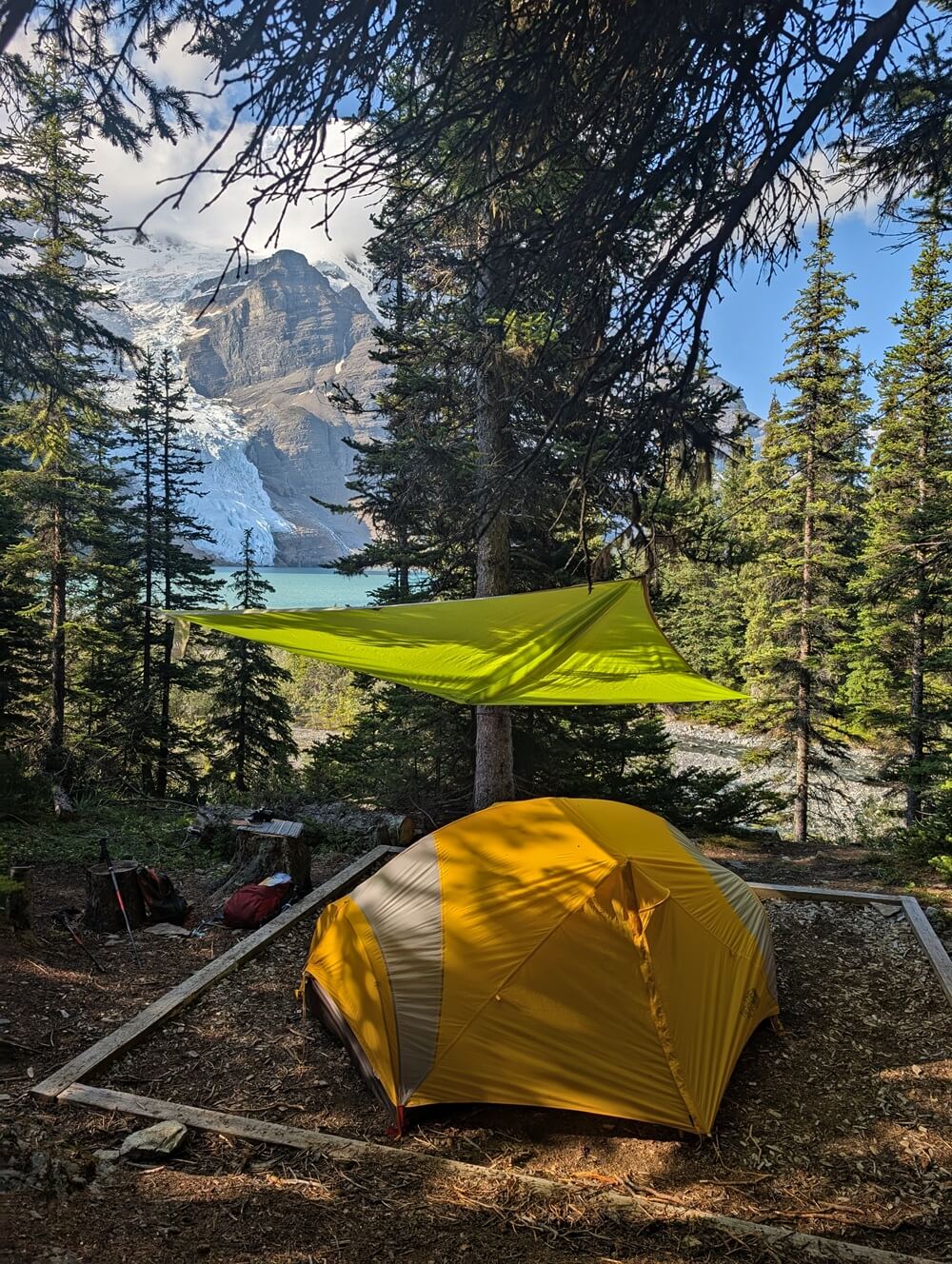
Sleeping bag
Berg Lake sits at an elevation of 1646m beside Mount Robson, a towering peak known for creating its own weather system. Snow and cold conditions are possible even in the middle of summer.
Daytime temperatures in summer typically average around 18°C but can reach 30°C on sunnier days. When it rains, temperatures usually drop to around 11 or 12°C, though it can feel a lot colder.
At night, expect temperatures anywhere between 0°C and 10°C, depending on cloud cover and overall weather conditions.
As a general rule, June and September are cooler and rainier than July and August. Depending on the year, temperatures can go below freezing (0°C) at night.
Temperature ratings
When choosing between different sleeping bags, be careful not to get confused between the comfort, limit and extreme temperature ratings.
The comfort rating indicates the temperature at which the average female can sleep comfortably through the night (men usually produce more body heat).
I would recommend bringing a sleeping bag with a comfort rating of at least 0°C (32f). Gemma sleeps cold in the backcountry so uses a sleeping bag with a comfort rating of -5°C (Rab Neutrino Pro 600).
Down vs. synthetic
Another factor to think about when choosing a sleeping bag is whether to go with down (feather) insulation or synthetic (polyester fibre) fill.
We both prefer down sleeping bags because they’re lighter and pack down more easily. For me, having a lightweight pack trumps the risk of my sleeping bag getting wet (something that has not happened in 50+ backcountry trips). Your level of risk aversion may be different to mine.
Whatever you choose, be sure to store your sleeping bag in a water-resistant compression bag (looks similar to a dry bag). We’ve used the same Outdoor Research compression sacks for 8+ years.
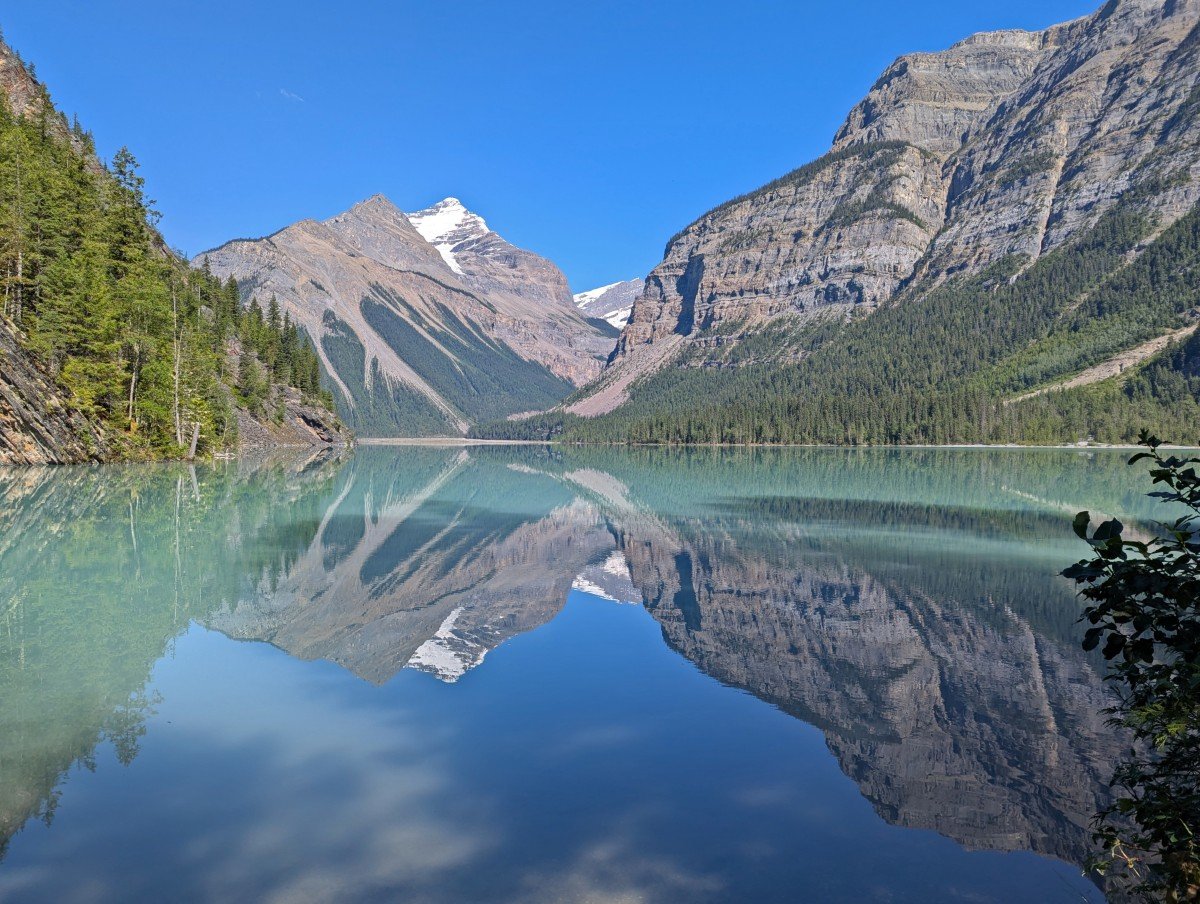
Sleeping mat/pad
Sleeping mats have an R-value, which is a measurement of the sleeping mat’s resistance to heat loss – the higher the number, the more warmth it offers.
For the Berg Lake Trail, I would suggest a sleeping mat with a minimum R-value rating of 3 (three seasons).
Hiking with your partner? Consider a double sleeping mat. We use an double Exped Ultra mat and it helps us make the most of the space in our tent.
If using an air pad, be sure to bring a repair kit in case of small holes or leaks.
More information about choosing a sleeping mat is in our Backpacking 101 guide.
Other important items for the Berg Lake Trail
Now we have the Big Four out of the way, here’s some quick tips on smaller but also important Berg Lake Trail items.
Stove and fuel
Most hikers use canister stoves on the Berg Lake Trail as they are easy to use, lightweight and pack down small. The second most popular option is a liquid fuel stove. These connect to refillable fuel bottles and have better heat control (but are heavier).
We used our tried and tested backpacking stove – the Jetboil MiniMo. The integrated stove and pot system is more efficient than other canister stoves (= faster boiling, less gas), especially in windy conditions.
The amount of fuel needed for your hike depends on a few factors, including the length of your trip, cooking style (boiling water only or cooking meals?), coffee preferences and more.
JR and I only used our stove to boil water and occasionally make hot drinks, so we were fine with just one 100g fuel canister.
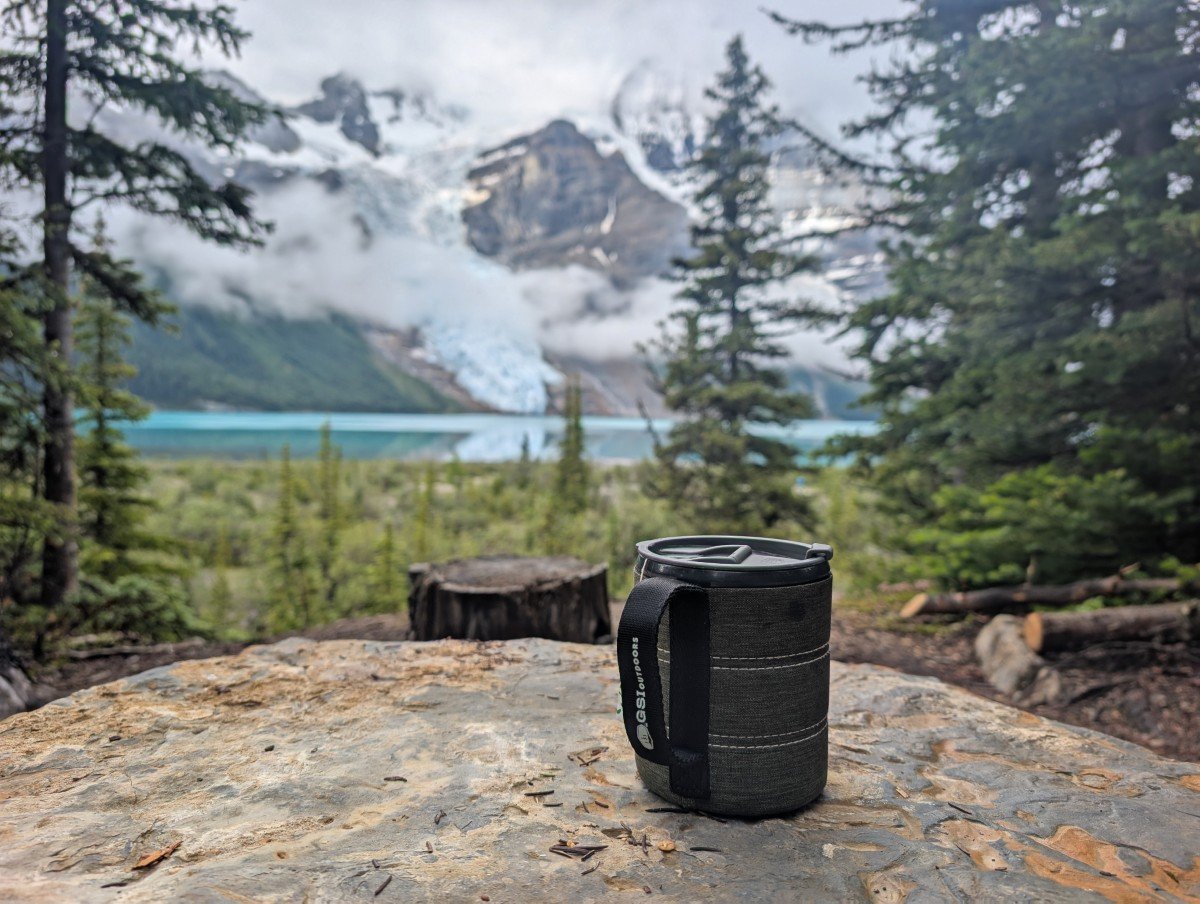
Cooking pot, plates, utensils and cleaning kit
A lot of Berg Lake Trail hikers eat prepared freeze-dried food, eating directly from the packet. I’d recommend buying a long plastic spoon if you choose to do this.
Preferring to make our own, we dehydrate meals at home and rehydrate in our Jetboil. One person eats out of the pot, the other from a GSI Infinity Backpacker Mug.
On this trip, we carried another Infinity mug for hot drinks. We also brought a small amount of biodegradable soap and a small dish cloth.
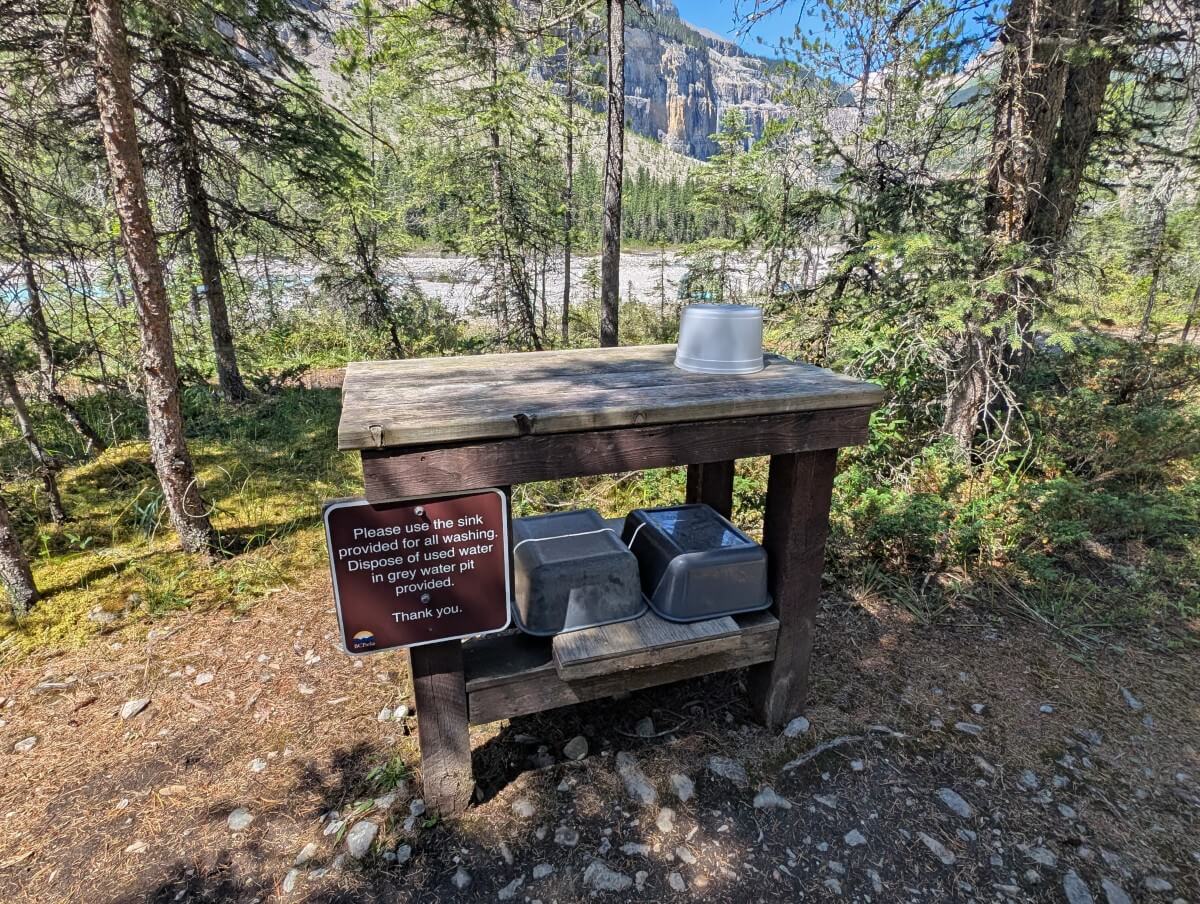
Food
Food is fuel! Keep in mind, however, that food will be the heaviest single ‘item’ in your pack. We bring 1.1lb (0.49kg) of food per person, per day for backpacking trips, which is on the low side.
The best backpacking foods are nutritious (protein, carbs, healthy fats, fiber, vitamins), calorie-dense (high number of calories relative to weight) and store well at room temperature (no food spoilage).
Backpacking food is always subject to a lot of personal preference and you may already have some favourites. Always bring a little more food than think you need to allow for delays.
Some of the most popular items to bring are:
- Granola or oatmeal for breakfast
- Tortillas, peanut butter, tuna, jerky (vegan or meat), cheese, crackers for lunch
- Pasta or rice-based dehydrated or freeze-dried meals for dinner*
- Dried fruit, nuts, trail mix, seeds, protein/granola bars, M&Ms, sesame sticks for snacks
- Freeze-dried coffee, tea, hot chocolate, electrolyte drinks
We make our own dehydrated dinners, with our favourites being pasta puttanesca and pesto pasta.
Food storage
Each Berg Lake campground has metal food caches to store food and other smelly items overnight and when not in use.
Most hikers store food in a dry bag (one or multiple).
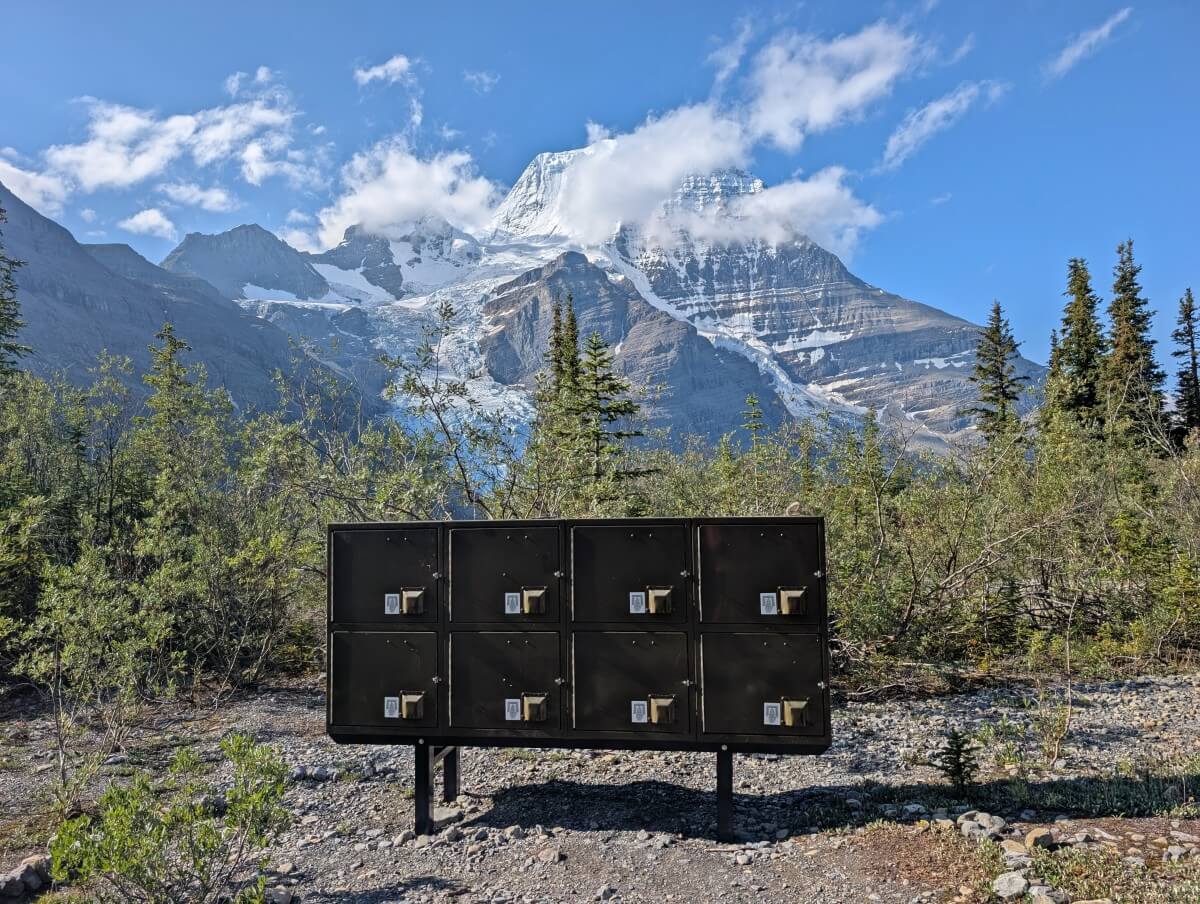
Water treatment system
There is a water source (river or lake) located close to each of the Berg Lake Trail campgrounds. There are other water sources accessible from the trail itself as well. The water sources are generally pretty clear, with not much sediment.
The two most popular ways to make water safe to drink while backpacking the Berg Lake Trail is to use a filter or water purification tablets. Some people choose to use a UV light instead.
We’ve tried many water purification options over the years and have settled on using a BeFree filter with a DIY gravity filter reservoir system. It’s easy/quick to use and is very lightweight.
Pre-made gravity filter systems are also available and I’d highly recommend this style, especially when hiking in a group.
Water storage
Using a bottle is the cheapest option to store water while hiking the Berg Lake Trail.
Smartwater bottles are popular for their size, durability and cheap price. They also fit onto the Sawyer Squeeze filter. 1l Nalgene bottles are also commonly used (durability, wide mouth opening).
We each carry hydration bladders to store water. It works well with our gravity filter water system.
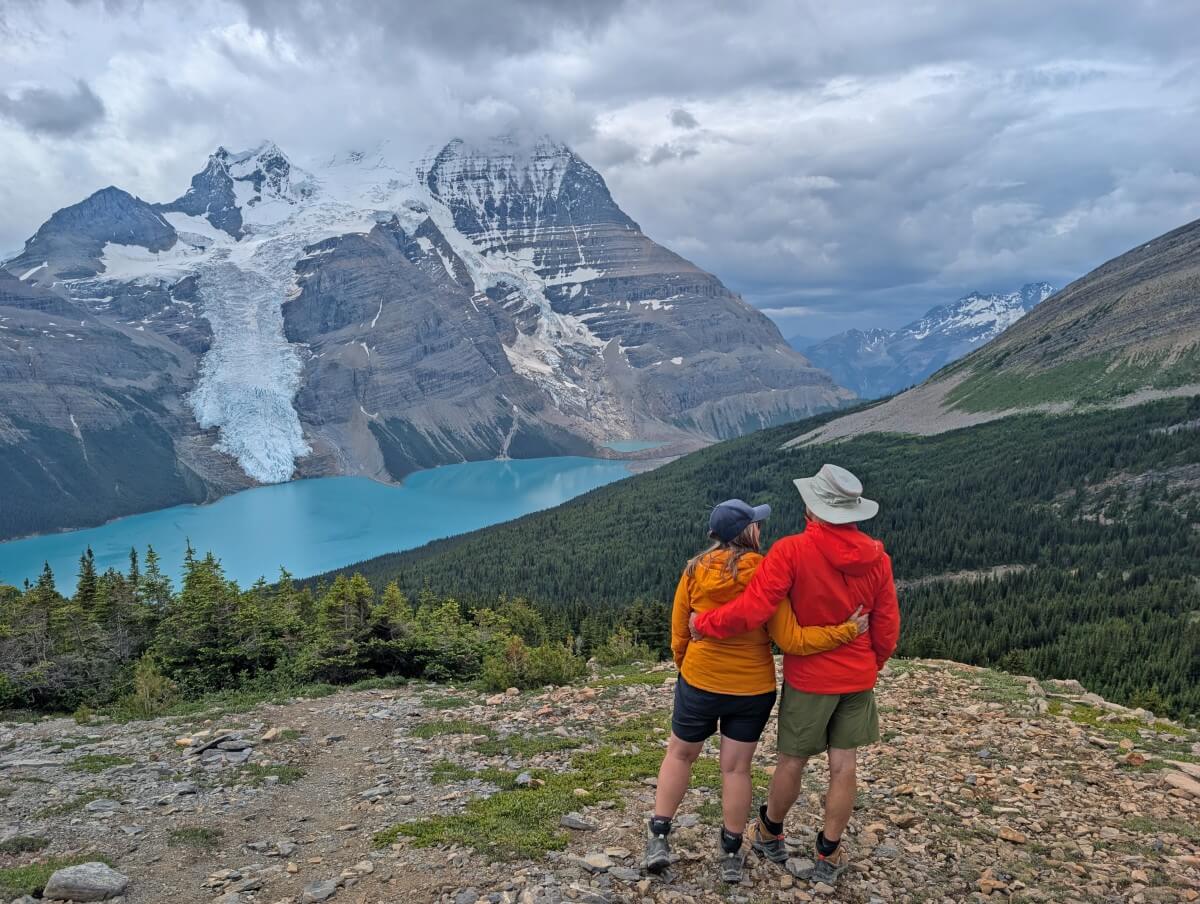
Clothing (at least two outfits)
Like food, hiking clothing is subject to a lot of personal preference.
Plan to wear layers and utilise clothing made from moisture-wicking and quick-drying fabrics (polyester, nylon, merino wool). Avoid cotton – it is cold/heavy when wet and takes a long time to dry.
The more clothing you pack, the heavier your backpack will become. However, it’s important to strike a balance by bringing enough layers and gear to handle both the warmest and coldest conditions you might encounter on the Berg Lake Trail.
Many backpackers carry at least two outfits for hiking – one to wear and one spare, with some extra layers for warmth. Some people prefer to bring a few more outfits, ‘just in case.’
Keep in mind that rain and snow are possible at any time during the main hiking season and can drop temperatures significantly.
Gemma’s Berg Lake Trail clothing packing list:
- 3 x merino wool t-shirts
- 2 x long sleeve merino wool shirts
- 1 x sunshirt with hood
- 2 x quick drying pants
- 2 x quick drying shorts
- 5 x underwear
- 2 x quick drying sport bras
- 3 x merino wool socks
- 1 x merino wool base layer pants (long johns)
- Arc’teryx Atom LT Jacket (warm mid-layer or outer layer)
- Arc’teryx Beta Jacket (waterproof)
- Wool hat
- Sun hat
- Light merino wool gloves
- Buff neck gaiter
My own clothing was very similar – no sport bras but I did bring swimwear for a dip in the lake. We both brought two pairs of pants since cooler temps and rain were forecast.
Footwear
Like clothing, appropriate footwear for backpacking trips is pretty subjective. A lot of people, however, use waterproof hiking boots.
The cut of the boot varies according to personal preference. Backpacking boots are designed to carry heavier loads, with stiffer midsoles and a high cut covering the ankles. You may prefer a lower cut. We both use Salomon Quest 4 GTX hiking boots.
Whatever type of shoe you choose, make sure that you have worn them in a little before heading to the Berg Lake trailhead.
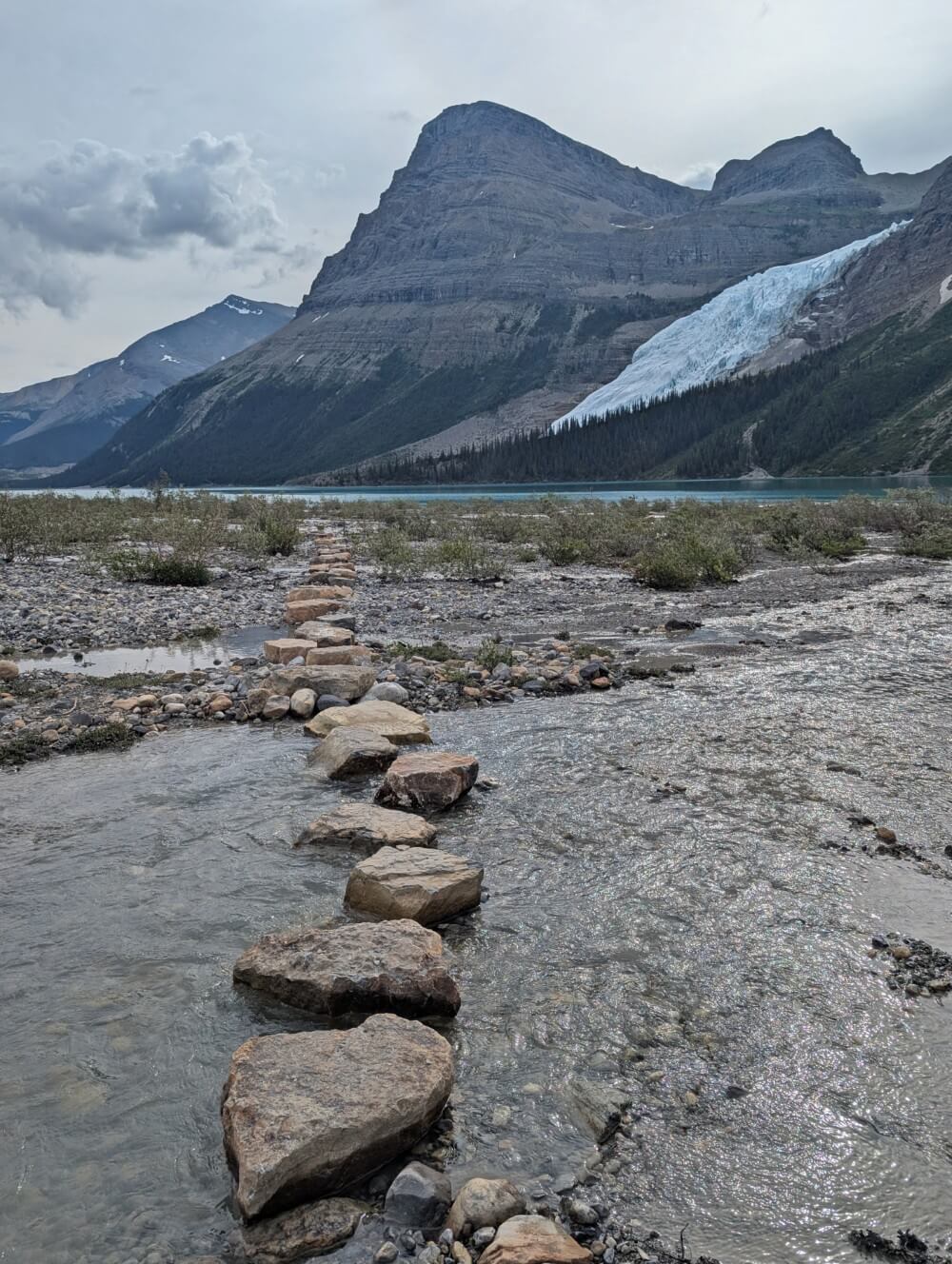
First Aid kit
A First Aid kit is essential for everyday irritations (bee stings, small cuts) as well as major injuries. One easy way to put a kit together is to buy a basic one and then customise it to your needs.
Our kit includes items like bandages, blister plasters, surgical tape, oral rehydration salts, painkillers, tweezers and antihistamines. We also have Leukotape for blister prevention.
Light source
A flashlight will do but it’s much easier to use a headlamp. It’s best not to use your phone as it uses the battery unnecessarily. The number of lumens indicates how bright the headlamp is.
We brought our Petzl Actik Core, which displays 350 lumens. It runs on runs on regular batteries or lightweight Lithium-ion batteries (recharged by USB).
Map
The Berg Lake Trail is very popular and the trail is well established. The day hikes around Berg Lake are also well used but can be harder to follow in steeper areas (particularly Snowbird Pass).
BC Parks has a basic map available. Surprisingly, the Mount Robson Welcome Centre does not sell any Berg Lake trail maps. Since the main trail was recently rerouted, we couldn’t find the updated version on any apps.
For day hike navigation (and planning), we used Organic Maps. We found the routing to be accurate in July 2025.
Signalling device
A signalling device is one of the 10 Essentials for every backcountry adventure. Some backpacks have built-in whistles on the sternum (chest) strap. Our Osprey backpacks do.
Fire starters
Another of the 10 Essentials, fire starters can be a lifesaver for backcountry users suffering from hypothermia. Campfires are not allowed on the Berg Lake Trail but most campgrounds have a wood stove for emergency use.
Repair kit and tools
The cheapest solution for most on-trail gear issues is to bring a small amount of duct tape and a knife. Both of these items can also be utilised for wilderness first aid if needed (making splints etc). We find Tenacious tape to be a good alternative to duct tape.
Sun protection
No matter the weather forecast, sun protection is a must. There are some exposed sections of trail. Bring sunscreen, a sun hat, polarized sunglasses and lip balm. A neck gaiter can be used to protect your neck on hot days.
Toiletries and medication
We bring small, folding toothbrushes and a travel-sized tube of toothpaste on backpacking trips. Other toiletries and personal items you may want to consider are deodorant/antiperspirant, hair brush, comb and/or hair tie.
Bugs were not an issue for us on the Berg Lake Trail in mid July. We did carry some repellent but didn’t use it.
If you take any medication, don’t forget to bring enough for your planned days as well as some extra for possible delays.
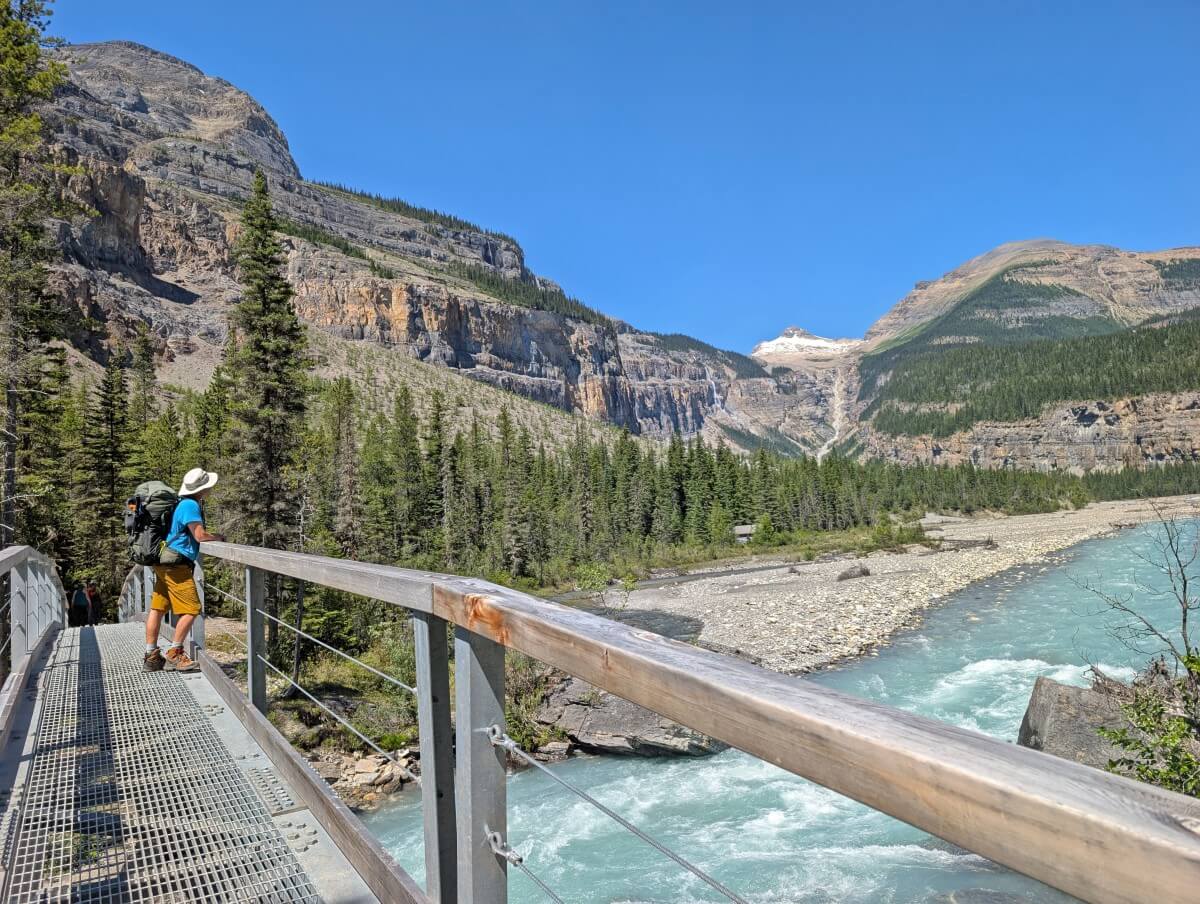
Berg Lake Trail specific items
Now that we’ve covered all of the essential backpacking gear you’ll need to bring, let’s move on to some specific Berg Lake Trail specific items.
Please note that the first item is mandatory while the others are just recommended by us, based on our own Berg Lake experience.
- Berg Lake Trail permit – Collect your pink laminated permit from the Mount Robson Welcome Centre before hitting the trail
- Toilet paper – There is no toilet paper provided in any of the outhouses in the Berg Lake Trail area
- Satellite communication device – There is zero phone signal in this region. For emergency purposes, we carried an InReach device. The newer iPhones have satellite messaging.
- Hiking poles – There are some steep descents where hiking poles can be helpful. They can also be useful after rain as some sections of the trail can be muddy. We used Black Diamond’s Carbon Zs, which are super light and also pack down easily
- Sandals and/or camp shoes – I love having some camp shoes to change into after a day of hiking. Gemma uses Teva Hurricane Drift sandals and I have hut slippers
- Bear spray – Both black bears and grizzly bears roam this area. Bear spray is helpful to have as a last resort in the unlikely event you need it. Carry the canister in an accessible place and know how to use it
- Power bank and charging cable – We use our phones as cameras so had to recharge our phones twice while on the trip
- Lightweight daypack – It’s handy to have a smaller day backpack for hiking on the shorter trails around Berg Lake. Alternatively, you can just use your main pack like we did
- Lightweight tarp – This area can be pretty rainy, even in summer. The shelter at the Berg Lake Campground isn’t big enough for all of the campers staying there. If it’s hot, you can use a lightweight tarp for shelter too
- Towel and swimsuit – You may find yourself wanting to swim or dip in Berg Lake. For an even colder dip (with icebergs) head to the lake below Robson Glacier
Additional items / luxury options
We didn’t bring most of the following items but depending on your preferences and experience, you may want to.
- Gaiters – Gaiters strap over hiking boots and prevent mud and rocks from falling into shoes. There are a few muddy sections on the Berg Lake Trail but they are pretty short, so we decided not to bring gaiters
- Camp chairs – For some people, being able to sit in a proper chair after a long day of hiking is a must. Our friends brought Therma-a-Rest Z pads. We just used the picnic benches provided in the campgrounds or sat on the ground
- Camp pillow – We don’t bother with pillows but I know a lot of other hikers do
- Reading material – Some hikers like to bring a book to read in the evenings. An eBook reader is an alternative option. We do not usually bring books on backpacking trips but instead load a book or two onto the Kindle app on our phones
- Games – Having some extra evening entertainment is particularly nice if its rainy. A pack of cards has many possibilities. We personally love YAHTZEE. It’s so easy to learn, quick to play and light to carry
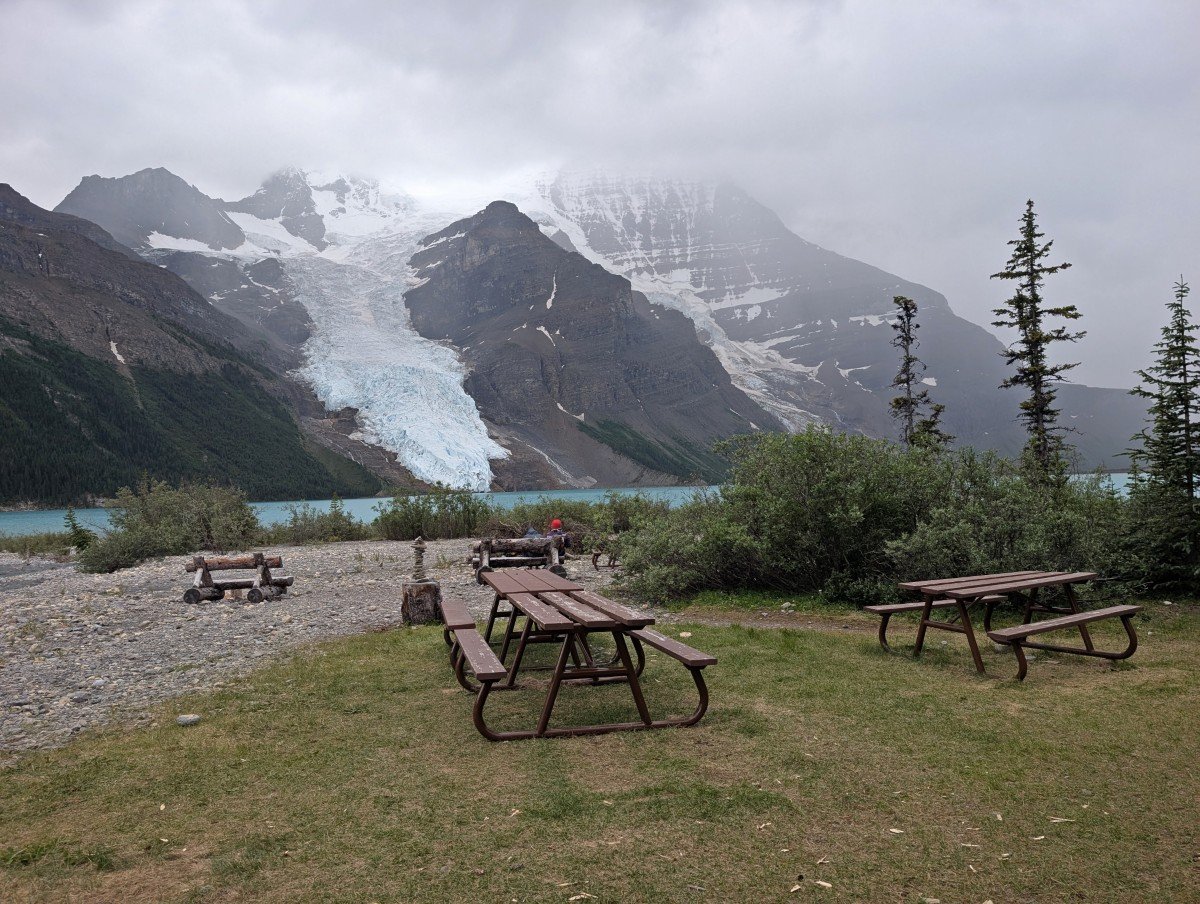
Other backpacking guides:
Mount Assiniboine
Lake O’Hara, Yoho National Park
The Iceline Trail, Yoho National Park
Turbine Canyon, Kananaskis Valley
The HBC Heritage Trail
The North Coast Trail
The Nootka Trail
Cape Scott Trail, Vancouver Island

One half of the Canadian/British couple behind Off Track Travel, Canada. Jean Robert (JR) is up for anything, but you’re most likely to find him either snowboarding, fishing or building something. Gemma and JR are currently based in the beautiful Okanagan Valley, British Columbia, Canada.

